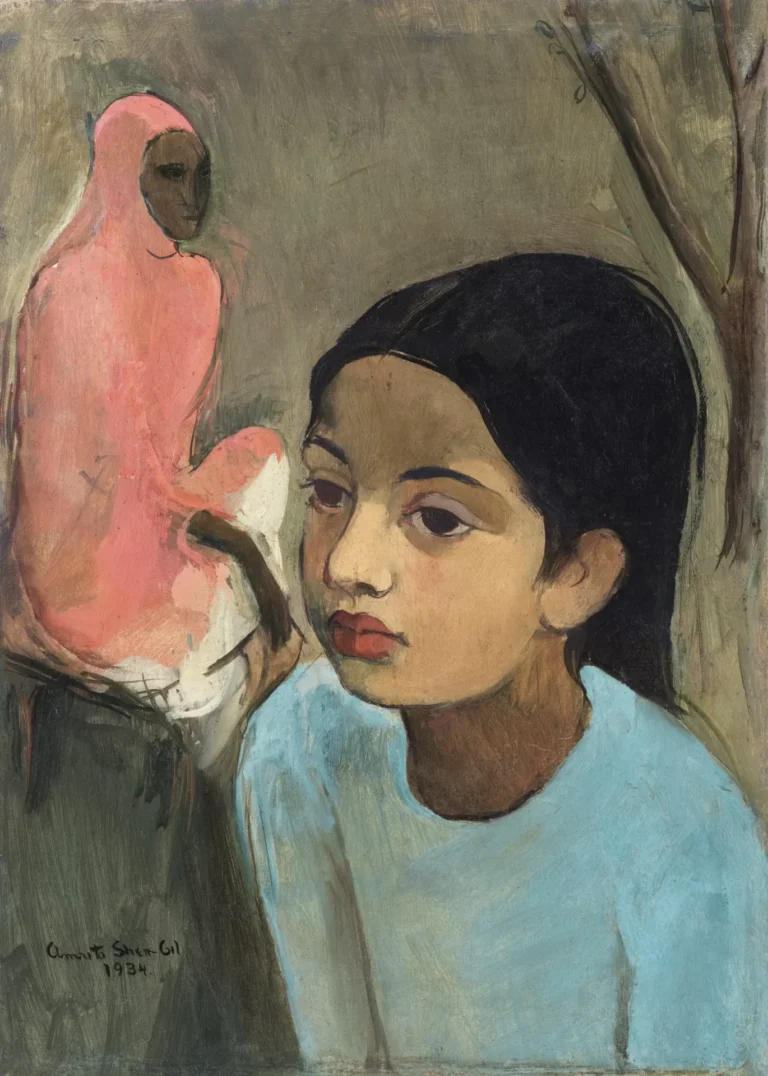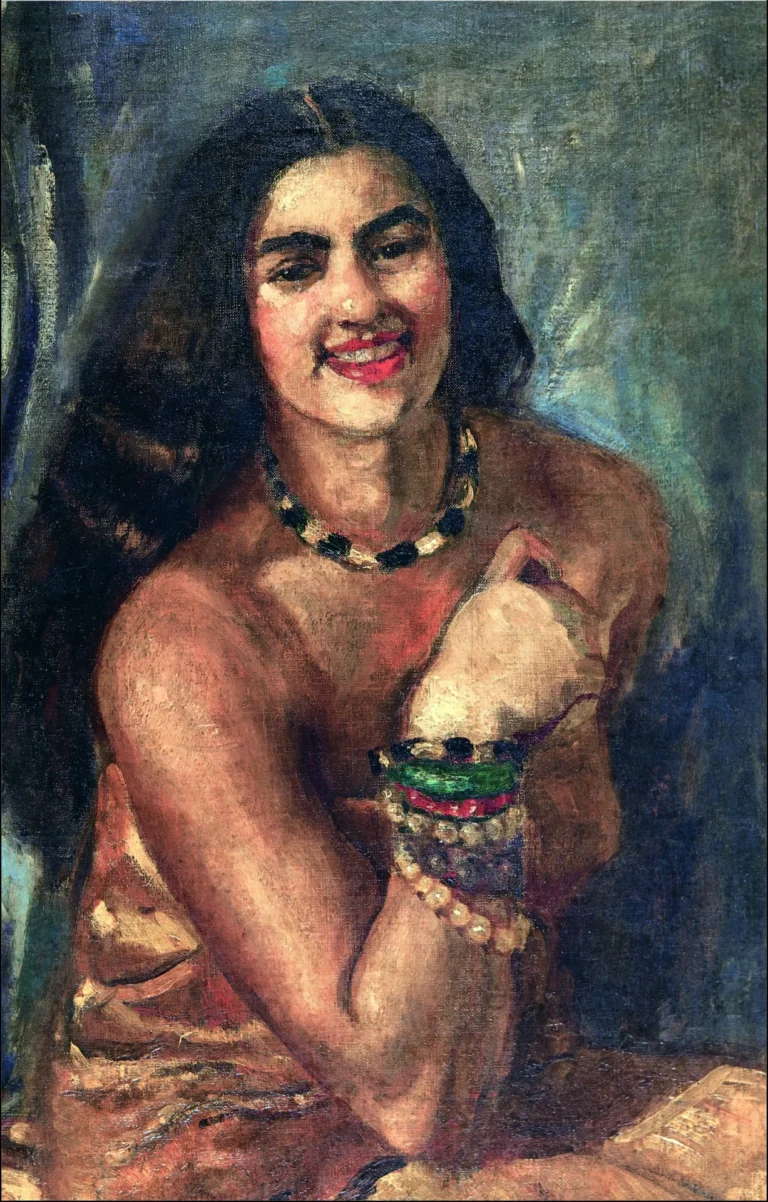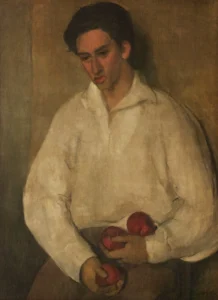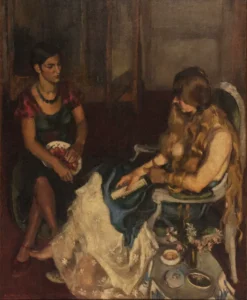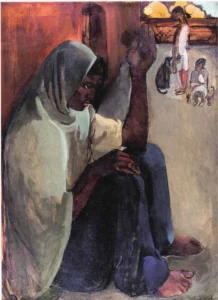The little girl in blue
Created in 1934 by the renowned Hungarian-Indian artist Amrita Sher-Gil, The little girl in blue features Lalit Kaur Mann, a relative of the artist. The painting is celebrated for its striking use of color and composition, showcasing Sher-Gil's shift from European influences to a more distinctly Indian aesthetic. The young girl, clad in blue, captivates viewers with her gaze against a lush Amritsar landscape. This work not only highlights Sher-Gil's artistic evolution but also serves as a testament to her cultural heritage and the challenges of depicting individual likeness.
1934
About the Artwork
The little girl in blue tells a heartfelt story of childhood, family ties, and cultural intersection. Amrita Sher-Gil painted her distant cousin, Lalit Kaur Mann, during a visit to her family’s ancestral home in Amritsar. Mann, known affectionately as 'Babette,' struggled to maintain her pose, but the final artwork projects a haunting tranquility and depth. Despite Sher-Gil's acclaim, Mann's mother disapproved, feeling it lacked her daughter’s true likeness. The painting reflects not only Sher-Gil’s transition into Indian themes but also her internal conflicts as an artist navigating two worlds.
Did You Know
Lalit Kaur Mann, the subject of the painting, was Amrita Sher-Gil’s distant cousin, giving the artwork a personal familial connection that adds depth to its narrative.
This painting marked a significant transition in Sher-Gil’s artistic style, as she began to move away from European influences towards a more Indian aesthetic characterized by vivid colors and local themes.
The little girl in blue was auctioned at Sotheby’s in November 2018, where it realized a remarkable ₹18.69 crore, making it one of the most valuable Indian paintings at auction, reflecting its esteemed position in the art world.





